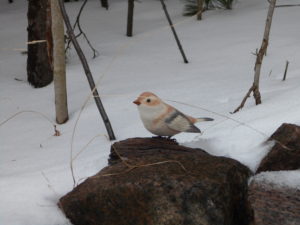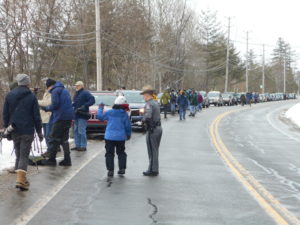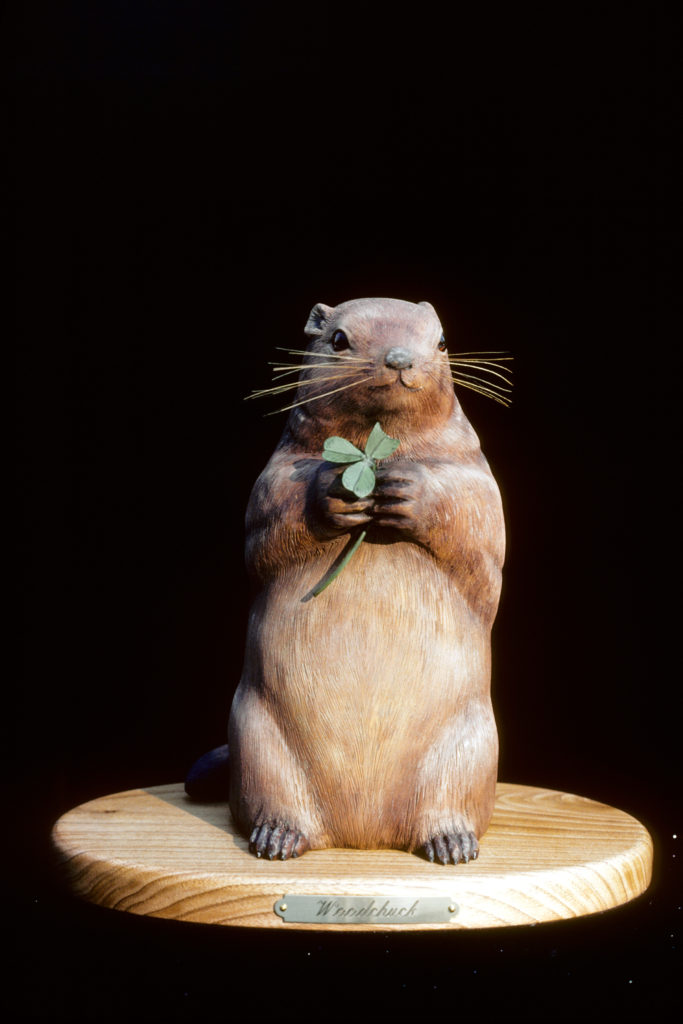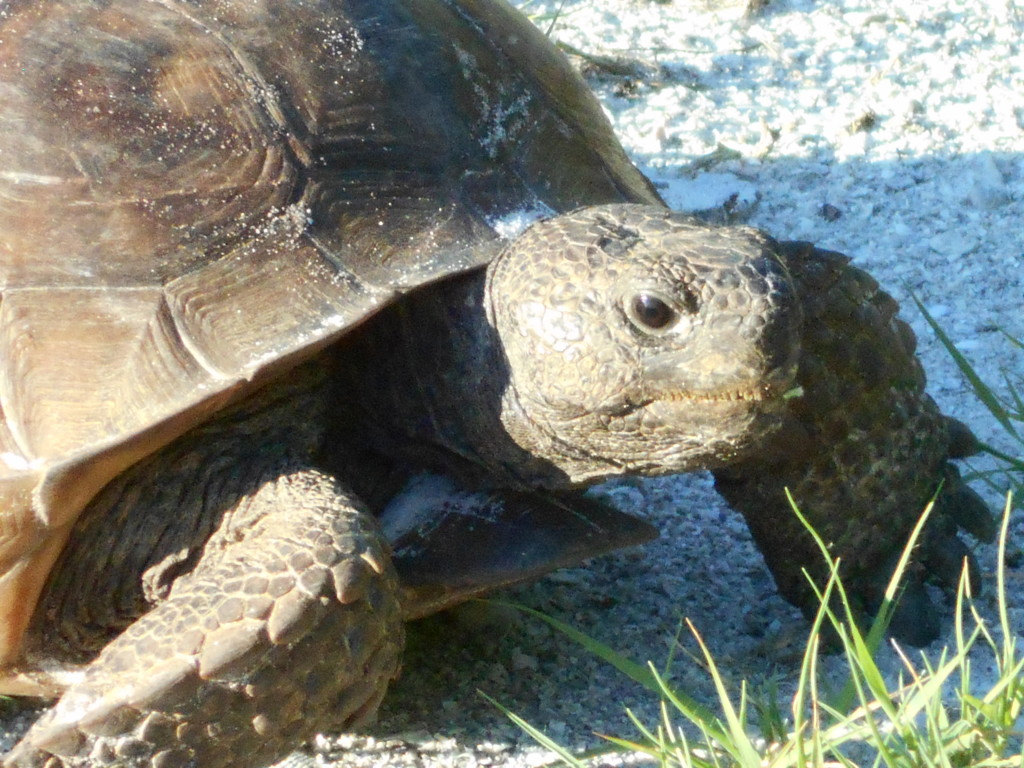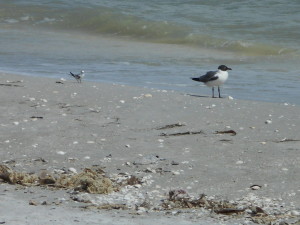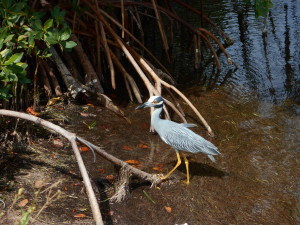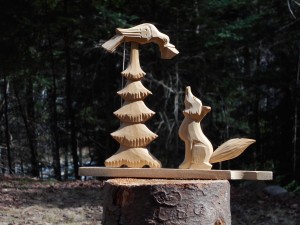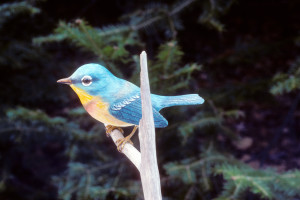This week we saw a Snow Bunting as we drove through the beautiful Keene Valley in the Eastern Adirondacks. Like the Ross’s Gull, the Snow Bunting breeds in the high arctic where it nests in rock crevices lined with fur and feathers for warmth.
They winter as far south as the northern US, and are most often seen on grassy roadsides eating seeds and small insects. This is of a carving I did of a Snow Bunting in its subtle winter plumage. I don’t have a good photo of a Snow Bunting because we usually see them flying away as we drive. Snow Buntings in flight looks dazzlingly white earning them the nickname of Snowflakes.
Their breeding plumage is completely black and white. Surprisingly they don’t molt to make the change from winter to breeding plumage. As spring approaches they rub the tips of their feathers on the snow wearing away the brown surface color to reveal the pure black and white beneath.
It’s always a treat to see this little visitor from the far north.
